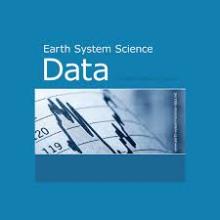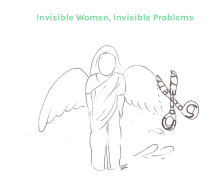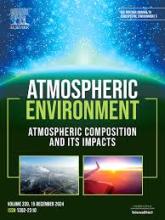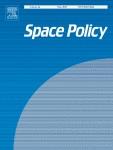Publications

|
Soumya Deep Das A balanced scorecard to enable electricity distribution sector reforms in India https://www.sciencedirect.com/science/article/abs/pii/S1040619023000696 Co-authored with Srikanth, R. (2023). A balanced scorecard to enable electricity distribution sector reforms in India. The Electricity Journal, 36(6), 107302. The performance of the State-owned electricity distribution companies (DISCOMs) that distribute 96% of the electricity in India is critical for the country’s energy security. However, the current studies are not suitable for assessing the performance of India’s DISCOMs in an integrated manner since their underlying models are fragmented. This study presents the development and application of an integrated FOBC framework which is a balanced scorecard including 32 key performance indicators related to finance, operations, business processes, and customer service. This framework is used to benchmark the performance of 40 DISCOMs in 17 States on a like-to-like basis leading to the identification of nine DISCOMs for restructuring. The FOBC framework can be used by the regulators and the government to benchmark DISCOM performance in a holistic manner. This study will be useful for policymakers to implement power distribution sector reforms to enhance energy security while decarbonizing the power sector efficiently. |

|
Gufran Beig, Saroj Kumar Sahu, Poonam Mangaraj Decadal growth in emission load of major air pollutants in Delhi https://doi.org/10.5194/essd-15-3183-2023 Co-authored with Saroj Kumar Sahu, Poonam Mangaraj, Earth System Science Data 15(7):3183–3202 The Indian capital megacity of Delhi is reeling under deteriorating air quality, and control measures are not yielding any significant changes, mainly due to a poor understanding of sources of emissions; hence, priority option in mitigation planning is lacking. In this paper, we have made an attempt to develop a spatially resolved technological high-resolution gridded () emission inventory for eight major pollutants of the Delhi region where high-resolution activity data of all possible major and unattended minor sources are generated by organizing a mega-campaign involving hundreds of volunteers. It is for the first time that we are able to estimate the decadal growth in emissions of various pollutants by comparing newly developed 2020 emissions with SAFAR (System of Air Quality and Weather Forecasting and Research) emissions of 2010 using the identical methodology and quantum of activity data. The estimated annual emissions for PM2.5, PM10, CO, NOx, VOC, SO2, BC, and OC over the Delhi National Capital Region (NCR) are estimated to be 123.8, 243.6, 799.0, 488.9, 730.0, 425.8, 33.6, and 20.3 Gg yr−1, respectively, for the year 2020. The decadal growth (2010–2020) in PM2.5 and PM10 is found to be marginal at 31 % and 3 %, respectively. The maximum growth is found to be in the transport sector followed by the industrial and other sectors. Maximum decadal growth found for the pollutants BC, OC, and NOx is 57 %, 34 %, and 91 %, respectively. The decadal shift of sectorial emissions with changing policies is examined. The complete dataset is available on Zenodo at https://doi.org/10.5281/zenodo.7715595 (Sahu et al., 2023). Saroj Kumar Sahu, Poonam Mangaraj |

|
V V Binoy Landing the ‘Tiger of Rivers’: Understanding Recreational Angling of Mahseers in India using YouTube Videos https://doi.org/10.1101/2023.07.22.550129 Co-Authored with Prantik Das. bioRxiv |

|
M Sai Baba International Widows' Day https://niascomm.in/2024/06/23/international-widows-day/ Scicom@NIAS The impact of the loss of a partner is devastating. When it comes to women, it gets magnified due to the long-term struggle for their fundamental rights and dignity. Armed conflicts resulted in displacement, and in more recent times, the COVID-19 pandemic has led to an enhanced number of people losing their partners. In 2010, the UN adopted June 23 as the International Widows Day. What can we do? Be empathetic and understand. Enhance awareness, advocacy, social support, and empowerment, and push governments to implement policy reform. |

|
Gufran Beig Development of a high-resolution emissions inventory of carbonaceous particulate matters and their growth during 2011–2018 over India https://www.sciencedirect.com/science/article/abs/pii/S1352231023001760?via%3Dihub= Co-authored with Praveen Kumar, et al. Atmospheric Environment, Vol.303:119750 First National level emission inventory development of Toxic Greenhouse gas Black Carbon (BC) and regular pollutant Organic Carbon (OC). The BC has double wampy, a greenhouse gas for climate change and deadly pollutant for health |

|
Vinay Kumar Dadhwal India's Space Economy, 2011–12 to 2020–21: Its Size and Structure https://www.sciencedirect.com/science/article/abs/pii/S0265964622000509?via%3Dihub= Co-Authored with Mani S & Shaijumon CS. Space Policy 64 |

|
Vinay Kumar Dadhwal Remote Sensing for Mango and Rubber Mapping and Characterization for Carbon Stock Estimation—Case Study of Malihabad Tehsil (UP) and West Tripura District, India https://link.springer.com/chapter/10.1007/978-981-99-0577-5_9 Co-Authored with S.V. Pasha& K. Saketh. In: Chaudhary, S., Biradar, C.M., Divakaran, S., Raval, M.S. (eds) Digital Ecosystem for Innovation in Agriculture. Studies in Big Data, vol 121. Springer, Singapore. |

|
Shaik Vazeed Pasha Remote Sensing for Mango and Rubber Mapping and Characterization for Carbon Stock Estimation—Case Study of Malihabad Tehsil (UP) and West Tripura District, India https://link.springer.com/chapter/10.1007/978-981-99-0577-5_9 Co-Authored with V. K. Dadhwal & K. Saketh. In: Chaudhary, S., Biradar, C.M., Divakaran, S., Raval, M.S. (eds) Digital Ecosystem for Innovation in Agriculture. Studies in Big Data, vol 121. Springer, Singapore. |
